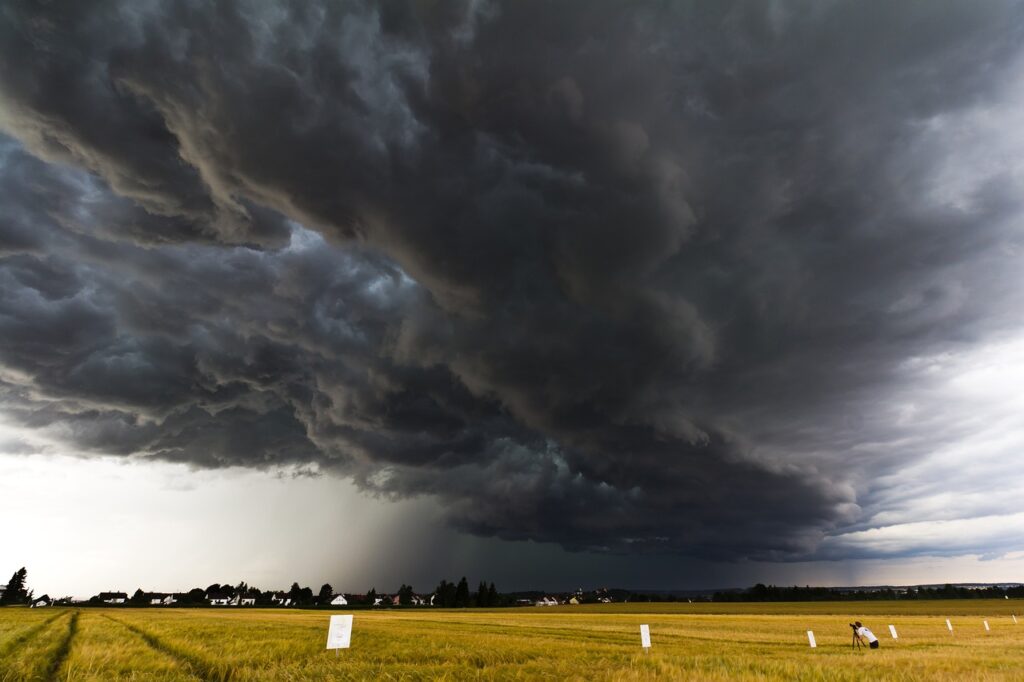- Right now, nothing is more important than storing food and water.
- Preparedness is more critical than that dress, that event, or the twice-a-month mani-pedi.
- Prepping is protection; as important as locking your door.
- Your club buddies are probably not thinking about how they can help you when the SHTF, so act accordingly. Your social life should be secondary.
- You cannot eat things, and no one will want them during a crisis or SHTF scenario. Buy what you need, and maintain what you currently have.
- Keeping up with the Joneses will not keep you alive. Preparedness will.
- Get your family used to scaling back now and being thoughtful of their resources.
While working on your mindset, you need to assess your priorities. If you are wondering how to afford to prep when you have Hulu, a Disney+ subscription, and a shoe habit, you must reconsider what is essential. You will not want to watch Amazon Prime when you have nothing to eat. You don’t want to hear your child’s belly grumble because you bought jewelry instead of food, and now no food is left. Monthly subscriptions to anything that isn’t going to food or preparedness will not be valuable once SHTF. There may be some items you can barter but understand, during a crisis, no one is interested in bartering an expensive bag for what little food they may have. Your only focus should be to gather, preserve, and store food and items that will help you during a disaster. The longer you wait, the more expensive they will get, and their availability will dwindle*.
Be a skilled surgeon with your budget by cutting out what is unnecessary. You don’t have to cut out everything fun, but do you need more than one specialized subscription TV service? Do you need to eat fast food more than once a week? Can you work remotely a couple of days a week to save on gas and other work-related expenses (you don’t know if you don’t ask). If you can’t work remotely, maybe take public transportation once or twice weekly? Do you need the brand name? Do you need that $6 coffee every morning? You may say, “All those things only cost $300 a month. Why would I give up those little luxuries?” Realize that 2.5 months of that amount – $750 – could feed a single female for a year or a mom and two kids for about four months (see table below). You may not think it is possible, but it is. Will the food be exciting and varied? No. Will it be three meals a day? Maybe. However, will it be nutritious, filling, and get you through until you can get something different or the situation improves? Yes.
For example:
$35 25 lb. bag of White Rice (100 servings, 1/2 cup uncooked) | = $140 for one year (400 servings) | |
$35 25 lb. bag of Black beans (over 100 servings, 1/2 cup cooked) | = $140 for one year (400 servings) | |
$16 Canned chicken (1 pkg of 6 cans, 4 servings each) | = $192 for one year (288 servings) | |
$23 Tuna in Water (case of 24, 5 oz cans, 1 serving each) | = $276 for one year (288 servings) | |
TOTAL: | $109 for 48 days (meat protein), 100 days (rice & beans) for a single person | $748 for one year |
$187 for 48 days (meat protein), 33 days (rice and beans) for three people | $2,244 for one year; family of 3 | |
There is pasta. Rice. Beans. Canned vegetables. Canned meat. Canned meals, like ravioli in tomato sauce. Soup. If you have been buying and freezing an extra package of fresh meat here and there, these will augment cheap food items to provide variety. You may have to venture into stores you haven’t shopped in before. You may have to clip some coupons. You may have to move to the store brand. Single Moms, I can hear your sighs. “I work hard, and being able to give my kids the entertainment they want, the foods they love, not constantly chiding them for being occasionally wasteful, is the least I can do in our less-than-ideal situation.”
Giving your kids simple luxuries like brand-name cereals, snacks, and their favorite streaming service may seem like a small price to compensate for other things you may not be able to provide (and it helps with your sanity, too). But if you have their future in mind, get them used to paring back now, especially if you are transitioning to the single-parent life and much child support isn’t forthcoming, or funds are low. Please understand that the abundance we have enjoyed up to this point is ending, and food choices will continue to narrow.* Get them used to this while you can slowly incorporate changes in their diet rather than abruptly when their favorite things become too expensive, unavailable or little is left except overly processed food with little nutritional value.
As mentioned in an earlier blog, in a disaster, you may expect the government to get to you with food, but they may not for days or weeks, and by then, they may not have enough. If you aren’t storing food and water for yourself, why would anyone else be interested in doing it for you? You should not expect your church, family, or parents to have extra food for you and yours. Why would you have such an expectation and leave something so critical to someone else?
Single women, where are you spending money that could go to something that will serve you in an emergency? Spending $10 a day for lunch can be replaced by brown-bagging your lunch a couple of days a week and using the money you’ve saved for some extra canned goods or cases of water.
Self-care is essential, but take an honest look to see where you can move some of that expense to preparedness. A pedicure, a massage, and getting your hair done feel great. Being groomed is essential for our self-esteem and confidence, and massages are excellent for stress. However, if there is a treatment or service that you could sacrifice, you may want to do so if that means you have a few more dollars to prep. For example, instead of the Deluxe Manicure, get the basic. You are still getting your nails done, but the extra savings can go towards a food dehydrator or NOAA emergency radio*.
Expanding your (and your kids’) palate is also a way to incorporate new foods to supplement when the usual fare is unavailable. The price of beef, chicken, and pork will continue to rise due to the costs of farming operations*, and fewer cuts will become available or unaffordable. For this reason, incorporate other meats into your menu, like turkey, fish, lamb, etc. If there is a run on the stores and beef, chicken, and pork are out of stock, you have options that may be available, even if not favorites. Try canned versions of popular meats, such as canned chicken breasts, which are great for quesadillas, soup, or chicken salad, where the type of meat is more important than its form. Avoid pouch-type tuna and chicken as they are more expensive than buying the canned version, which you can season and portion out for your needs. Try potted meats, such as deviled ham. Even if they’re not a go-to, they are great for a bug-out bag and will get eaten when hunger hits, and there is no other choice.
Many websites and articles advise budgeting and shopping more effectively without overspending. But what I believe is more important from a preparedness standpoint, is how to alter your budget to allow for more long-term storage options. Would you be willing to swap a package of frozen, over-processed food of questionable nutritional value for some canned goods and a case of water? Those pizza bites last one night. A pack of six cans of green beans will last much longer.
Do get a membership to a big-box club like Costco or BJ’s. A membership costs anywhere from $45-$110 a year, and Groupon often offers discounted membership. If you can spend $125 a month on Starbucks, you can afford a membership to such a store. Membership will allow you to buy in bulk, saving money over time and getting more preps sooner. If you genuinely cannot afford a membership and have a family member or friend who does, ask if you can tag along for a trip to get some things. The savings on paper towels, meat, and canned goods will be worth the extra time and space needed to store them. The trick is not to purchase more than you consume or can safely stash.
For example, fresh bulk produce will rot if not eaten within a few days. So don’t get that vat of spring greens if you rarely eat salad. Opt instead for bell peppers, which can be cut and frozen for future use, or canned vegetables.
Next: The Physicality of Prepping…Tales from a Chunky Dunk
Sources:
https://tradingeconomics.com/united-states/imports/ukraine
https://tradingeconomics.com/united-states/imports/russia
https://www.usbank.com/investing/financial-perspectives/market-news/supply-chain-issues-contribution-to-inflation.html
https://sentientmedia.org/farmers-animals-natural-disasters/2024
https://investigatemidwest.org/2024/03/13/droughts-complicated-by-climate-change-lead-to-historically-dwindling-us-beef-herd/
https://droughtmonitor.unl.edu/
I purchased this radio, but there are several models at different prices: https://www.amazon.com/Emergency-Portable-Rechargeable-Flashlight-Survival/dp/B08SQ6YJ9T/ref=asc_df_B08SQ6YJ9T/?gad_source=1&gclid=CjwKCAjwl4yyBhAgEiwADSEjeLVuu09YEcJ2o4QmMBGbM_YLwyMWpk9AvlhQ_qPch7LxMqSteKD8KhoCBqwQAvD_BwE&hvadid=693308325721&hvdev=c&hvdvcmdl=undefined&hvlocint=undefined&hvlocphy=9010882&hvnetw=g&hvpone=undefined&hvpos=undefined&hvptwo=undefined&hvqmt=undefined&hvrand=2932218298695600151&hvtargid=pla-1683467335354&linkCode=df0&mcid=ae76855bc9253aaf891fa52bd2121b94&tag=hyprod-20&th=1




Pingback: The Prepper’s Checklist: Your Essential Tool for Organized Survival -